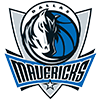For the third installment of our position-by-position breakdowns, we take a look at the nation's top wide receivers. The Group of Five conferences are loaded at the position as receivers from Middle Tennessee, Memphis, Colorado State, Houston, and Boise State comprise our entire Top Five. For more position-by-position breakdowns, our quarterback and running back articles are available for all your draft prep needs.
1. Richie James, Middle Tennessee, Jr.
You might look at James and not take him for much – he's generously listed at 5-9, 180 – but he's already one of the best college football receivers ever as he heads into his redshirt junior year. A unique threat in all phases of offensive play, James kills defenses as a runner or as a receiver at all levels of the field. He has 3,456 yards and 25 touchdowns from scrimmage in his first 26 career games, a preposterous pace that he might somehow maintain this year since Middle Tennessee brings back star quarterback Brent Stockstill.
2. Anthony Miller, Memphis, Sr.
Miller probably could have been a mid-round pick if he had declared for the NFL Draft, but he opted to return to school following a 2016 season in which he totaled 95 receptions for 1,434 yards and 14 touchdowns on 137 targets. There's not much reason to expect a better season in 2017 – he's already set the bar so high – but it is reasonable to expect similar output. Quarterback Riley Ferguson is back, so Miller is locked in for a repeat campaign. If Ferguson improves in his second year as starter, then maybe Miller really can reach even greater heights.
3. Michael Gallup, Colorado State, Sr.
The junior-college transfer took some time to find his rhythm with his new team last year, but Gallup finished on tear to end the season. Gallup's final eight games (58 receptions, 1,024 yards and 12 touchdowns) might not be sustainable over the course of a full season, but that's offset by the fact that he'll start much faster than he did last year, when Colorado State threw for just 171 yards in the first two games. He finished last season as one of the nation's elite fantasy receivers, and there's no reason to think anything will change this season.
4. Linell Bonner, Houston, Sr.
Bonner was fifth in the nation in receptions last year, hauling in 98 of 135 targets for 1,118 yards. He had just five touchdowns, but that number should come up this season with Chance Allen gone and Houston likely running a more pass-first offense with Kyle Allen taking over at quarterback. Bonner may not have the ideal size at 6-0 to be a major red zone threat like his counterpart Steven Dunbar (6--3), but Bonner has the elite hands and body control to warrant a large share of the targets in what should be an explosive Houston offense.
5. Cedrick Wilson, Boise State, Sr.
Wilson nearly matched Thomas Sperbeck's receiving output last year (1,129 to 1,272) on 24 fewer catches and 28 fewer targets. Now that Sperbeck and pass-catching running back Jeremy McNichols are out of the picture, it should be Wilson's show in Boise as junior quarterback Brett Rypien's favorite target. Wilson (6-3, 183) has superior size and athleticism to Sperbeck, which could yield better red-zone utility. He'll command plenty of attention from opposing defenses, but with so many targets headed his way, Wilson is all but locked in as a top fantasy wideout.
6. Tavares Martin, Washington State, Jr.
Gabe Marks, the school's all-time leading receiver, is gone from Pullman after a tremendous career, leaving the Cougs in need of a new No.1. Enter Martin, a 6-1 junior coming off a 64-catch season that produced seven touchdowns behind Marks. Now that Martin is the presumptive No.1 wideout, that target volume should jump well into the 100s if Marks' 133 targets in 2016 season are any indication. Martin may be a bit of a product of the system, but the immense opportunity awaiting him alleviates any potential efficiency concerns.
7. Keke Coutee, Texas Tech, Jr.
The Texas Tech passing game was supposed to be property of Jonathan Giles this year, but the top Red Raider wideout shockingly transferred this offseason. That leaves Coutee as the lead returning wideout, and his 2016 production gives reason to think his numbers will explode in the role. Coutee turned 87 targets into 55 receptions for 890 yards and seven touchdowns last year, and the exits of 2016 Tech wideouts like Giles, Ian Sadler and Devin Lauderdale leave Coutee with a good chance of seeing more than 10 targets per game.
8. Cody Thompson, Toledo, Sr.
Thompson doesn't get enough recognition for it, but he's been incredibly efficient and explosive the last two years, over which he's totaled 101 catches for 2,094 yards and 16 touchdowns. That included a 2016 season where he turned 101 targets into 1,269 yards and 11 touchdowns, and something even better should be in store for 2017. Fellow wideout Corey Jones graduated after seeing 87 targets last year, as did touchdown hog Michael Roberts (16 scores), so there should be considerably more opportunity. With 45-touchdown quarterback Logan Woodside back, it's all locked in.
9. James Washington, Oklahoma State, Sr.
Despite falling this far down the list, Washington may be the most feared receiver in college football. He's an explosive deep threat coming off a season in which he turned 133 targets into 1,380 yards and 10 touchdowns, giving him his second 1,000-yard, 10-touchdown season in a row. Washington returned to school because he and star quarterback Mason Rudolph agreed to graduate together, and with their pact another year of misery for Big 12 defenses. Even with a deep group of receivers to compete with at Oklahoma State, Washington should dominate again.
10. Dante Pettis, Washington, Sr.
This might seem high for a senior wideout with a career high of 822 yards, but Pettis' prominence in the Washington offense is about to go up with John Ross off to the NFL. No one is as fast as Ross, but Pettis is still a high-grade track athlete who gives defensive coordinators nightmares all the same. Even with Ross catching 81 passes for 1,150 yards and 17 touchdowns last year, Pettis posted 15 touchdowns on just 53 receptions. Quarterback Jake Browning is back, so the offense should keep flying high, and Pettis figures to be the lead target.
11. Courtland Sutton SMU, Sr.
Sutton is one of the best receivers in college football, and he would rank closer to the top five if he could be assured even vaguely decent play at the quarterback position for SMU. After starter Matt Davis got hurt last year, backup Ben Hicks went on to throw for 2,930 yards (6.9 YPA), 19 touchdowns and 15 interceptions despite a generally favorable situation. If Hicks can take a step forward this year, Sutton should improve on his already strong average of 9.0 yards per target, which yielded 76 catches for 1,246 yards and 10 scores last year.
12. Scott Miller Bowling Green, Jr.
Miller was a bright spot in an otherwise tough season for the Falcons as he broke out with 74 catches for 968 yards and 10 touchdowns. Miller could take another step forward in 2017, too. Bowling Green's offense improved as the season wore on under quarterback James Morgan, who figures to be more comfortable in his second year. Playing in an Air Raid-style scheme that lacks receiver depth, Miller should see one of the highest target counts in the nation, giving him a high floor and ceiling regardless of how efficient he might be on a per-target basis.
13. Deon Cain Clemson, Jr.
Deshaun Watson may be gone, but so are the 311 targets allotted to Mike Williams, Artavis Scott and Jordan Leggett from last year. Even with a smaller pie to divide between receivers, Clemson's depleted pass-catcher rotation and Cain's own standout talent should dictate a breakout season. Going from the No. 3 wide receiver to the No. 1 is a lot more pressure on Cain, but Cain is a former blue-chip recruit who finished his sophomore year with 9.5 yards per target and a touchdown on nearly 12 percent of his targets.
14. Steven Sims Jr., Kansas, Jr.
Sims (5-10, 176) may not be the biggest receiver, but there were few better in the Big 12 last year. He ranked fourth in the conference in receptions (72) and ninth in YPG (71.6), all while playing in an offense that averaged just 6.2 YPA. Now that Kansas' quarterback situation has stabilized, Sims is in line to thrive as the No.1 target in former TCU coordinator Doug Meachem's system that features fast tempo and Air Raid concepts. After securing more than 27 percent of Kansas' targets last year, Sims should be among the nation's 2017 leaders in the category.
15. Steve Ishmael, Syracuse, Sr.
Ishmael (6-2, 210) certainly looks the part of a big-time receiver. However, he disappointed in a new system under coach Dino Babers last year. While his receptions went up to a career-high 48, he averaged just 11.7 YPR and his touchdown total fell from seven to one. With Amba Etta-Two gone, though, Ishmael has less competition for targets as he steps into a No.1 role in one of the most explosive systems in FBS. If quarterback Eric Dungey stays healthy and Ishmael delivers on his No.1 ceiling, he could be one of the ACC's most productive wideouts.
16. Penny Hart, Georgia State, Jr.
Hart's encore to a stellar freshman season was cut short last year due to a broken foot, but he's back and ready to be the Panthers' No.1 wideout in 2017. The 5-8 Hart had 71 catches for 1,099 yards and eight touchdowns as a freshman in 2015, outperforming then-junior and current Washington Redskin Robert Davis. Now that Davis is gone, Hart will be the focal point in the passing game. While Hart is a different type of receiver than the 6-3 Davis, he's still a game-breaker who should round back into form as one of the best wideouts in the Sun Belt.
17. Calvin Ridley, Alabama, Jr.
Ridley immediately established himself as the Tide's best receiver when he arrived on campus in 2015 and went on to record 89 receptions for 1,045 yards and seven touchdowns as a freshman. His production slightly fell off last season while playing through injury, but 72 catches for 769 yards and seven touchdowns isn't too shabby. With the injury behind him, Ridley should see a box score more like his 2015 season, especially with ArDarius Stewart and O.J. Howard off to the NFL after the two combined for 99 catches for 1,459 yards and 11 touchdowns last year.
18. J'Mon Moore, Missouri, Sr.
Quietly, Moore is the most productive returning receiver in the SEC. He led the conference in yards per game (84.3) and had eight touchdowns. Moore (6-3, 205) is a big, physical receiver who played his best games against some of Mizzou's best competition, with four games over 130 yards in conference play. He plays in an uptempo offense that ranked 14th in the nation in plays per game and, while he may not be as visible in the SEC as Christian Kirk and Calvin Ridley, Moore's production will be among the best in the conference.
19. Jimmy Williams, East Carolina, Sr.
With Zay Jones gone, the Pirates lose a receiver who garnered 226 targets last season. While Williams (5-11,194), is no Jones, he's still a talented option ready to take on the No.1 role in 2017. Williams was ECU's deep threat last season (18.2 YPR) while Jones gobbled up essentially every other available target. He has excellent after-the-catch skills, which is particularly valuable in an offense that gets receivers in space. Williams won't get close to Jones' reception total, but Williams has better explosiveness and could score more.
20. Christian Kirk, Texas A&M, Jr.
Kirk arrived to a Texas A&M squad loaded with talented receivers, but he made a compelling case to be considered the best of the bunch, even as a true freshman in 2015. He finished that year with 80 receptions for 1,009 yards and seven touchdowns, and while the quarterback play at A&M regressed last year, he still totaled 83 receptions for 928 yards and nine scores as a sophomore. Quarterback is a question again, but Kirk could see even more targets now that Josh Reynolds, Ricky Seals-Jones and Speedy Noil are gone from last year's team.
21. Equanimeous St. Brown, Notre Dame, Jr.
Notre Dame's lackluster 2016 obscured what was a breakout season from St. Brown. A specimen at 6-5, 205, St. Brown smoothly transitioned into the team's top wideout role, catching 58 passes for 961 yards and nine scores. He'll be working with a first-year starter at quarterback in Brandon Wimbush, but St. Brown's blend of size and speed should prevent a dropoff in production. His tape shows a player who can not only dominate on jump balls, but also get open downfield. St. Brown could be the next great Notre Dame receiver.
22. Allen Lazard, Iowa State, Sr.
Lazard very well could have entered this year's draft on the strength of a 69-catch, 1,018-yard season that included seven touchdowns. At 6-5, 223, he has the impressive catch radius and physical traits to dominate Big 12 corners. The issue with some of Lazard's ceiling stems from a lack of surrounding talent. If quarterback Jacob Park takes a step forward this year and Deshaunte Jones improves as the No. 2 option, it will open things up for Lazard. He may not top last year's production by much, but he's at least a safe bet to repeat as a 1,000-yard receiver.
23. Jaylen Smith, Louisville, Jr.
Smith's production from last season won't bowl anyone over (27 catches for 599 yards and six touchdowns), but it was excellent considering it was on just 46 targets. It's worth noting that Smith had stress fracture surgery on his foot this offseason, but assuming health for Week 1, this should be a breakout year for the 6-4, 210-pound wideout. With Louisville replacing last year's receiving leaders in James Quick, Jamari Staples, and Cole Hikutini, Smith will get all the work he can handle in what should still be an explosive offense.
24. N'Keal Harry, Arizona State, So.
Harry was one of the top receiver recruits of last year and validated that distinction by immediately earning a starting role in a fairly crowded Arizona State receiver rotation. He ended up leading Arizona State in receptions (58) and receiving touchdowns (five), and was only 55 yards away from leading the team in that category, as well. At 6-foot-4, 220 pounds, Harry is an imposing figure who should take another step forward in his true sophomore season. The arrival of transfer quarterback Blake Barnett could result in improved passing efficiency from last year's offense, too.
25. Jeff Badet, Oklahoma, Sr.
Although Badet isn't getting much hype after transferring to Oklahoma from a Kentucky squad that doesn't get much respect, he could have a big year as a graduate transfer. Not only does Oklahoma have to replace its two leading pass catchers from last year in Dede Westbrook and Joe Mixon, but Badet is simply a good player. Playing in an offense that averaged 7.8 yards per pass last year, Badet totaled 670 yards on just 58 targets. That's 11.6 yards per target in an offense where the other pass catchers combined for 6.9 YPT.
26. Jonathan Duhart, Old Dominion, Sr.
With leading 2016 receiver Zach Pascal off to the NFL, Duhart is expected to step into the lead role for Old Dominion in 2017. The loss of star quarterback David Washington is a hit to Duhart's value, but it should be offset by the greater opportunity awaiting him this year. He finished 2016 with 735 yards and nine touchdowns on 78 targets, and Pascal's exit leaves a void of 104 targets from last year's offense. With 17 touchdowns on his last 95 receptions, the 6-3, 221-pound Duhart should remain a strong red-zone target at the least.
27. C.J. Johnson, Wyoming, So.
There's an awful lot of NFL hype for Wyoming quarterback Josh Allen, but not many people are talking about how his star running back (Brian Hill) and top three pass catchers (Tanner Gentry, Jake Maulhardt, and Jacob Hollister) left for the NFL this offseason. Johnson is no lock for production, but he's the top returning pass catcher for Wyoming, and he was quietly promising as a redshirt freshman last year. He totaled 21 receptions for 304 yards and three touchdowns on just 26 targets last year, and he's a candidate to surpass 100 targets this season.
28. Nick Westbrook, Indiana, Jr.
When Simmie Cobbs went down last year with a broken ankle, questions swirled about who could possibly fill his shoes. Westbrook (6-3, 215) went from relative unknown to best receiver on the team, torching opposing defenses for 54 receptions, 995 yards (18.4 YPR) and six touchdowns. He didn't have gaudy numbers against Big Ten competition, but he had at least three catches or 60 yards in all but two of those conference games. With Cobbs returning to pair with Westbrook, Indiana should have a balanced passing game.
29. Simmie Cobbs Jr., Indiana, Sr.
Cobbs was poised to build on his breakout 2015 season last year, but a suspension followed by a season-ending broken ankle nixed that completely. Fortunately, Cobbs (6-4, 212) is back to full strength heading into 2017. When healthy, he nabbed 60 passes for 1,035 yards in 2015, and both marks were the best on the team. The emergence of teammate Nick Westbrook is a slight concern for Cobbs' target count, but there should be room for both after Ricky Jones and Mitchell Paige graduated after combining for 111 catches last year.
30. Demetris Robertson, California, So. Chad Hansen stole most of the headlines at California last season, but Robertson quietly had a tremendous season as a true freshman with 50 receptions for 767 yards (15.3 YPR) and seven touchdowns. Now that Hansen is off to the NFL, California will need to replace the 148 targets that went his way, and Robertson is the prime candidate to absorb a large share of those looks. There will be some growing pains this season thanks to a new quarterback and a new offensive coordinator at the reins, but Robertson has a promising early track record and elite recruit background to where we trust he'll be able to overcome those issues and build on his strong freshman campaign.









































